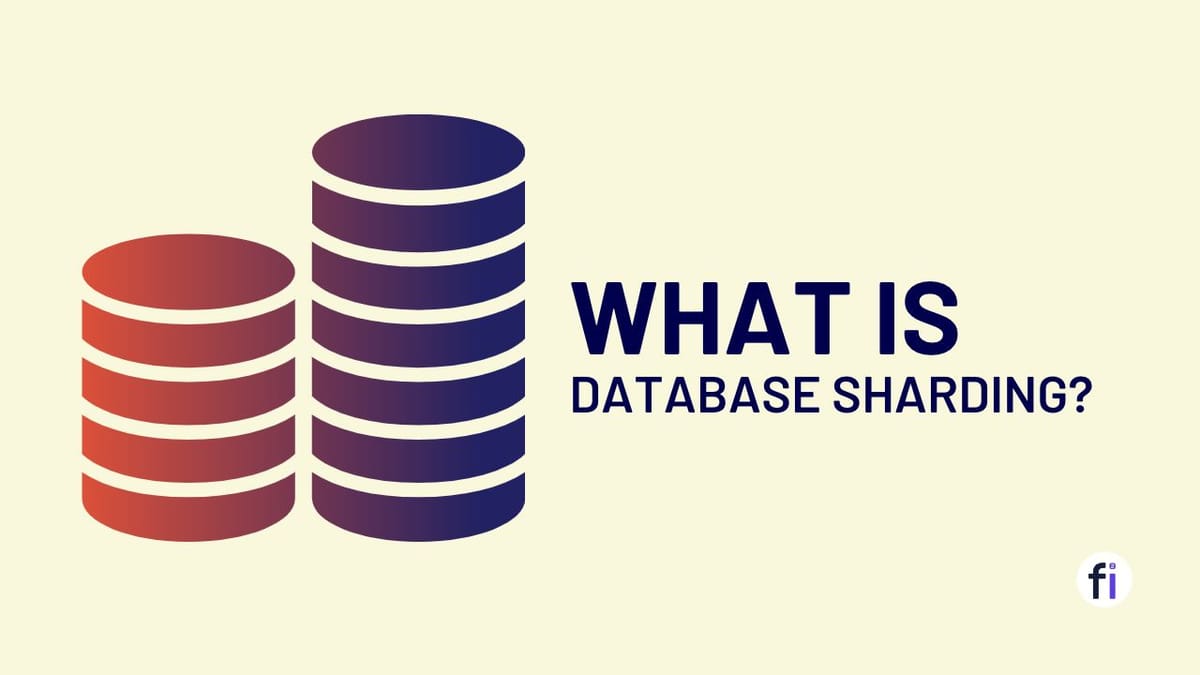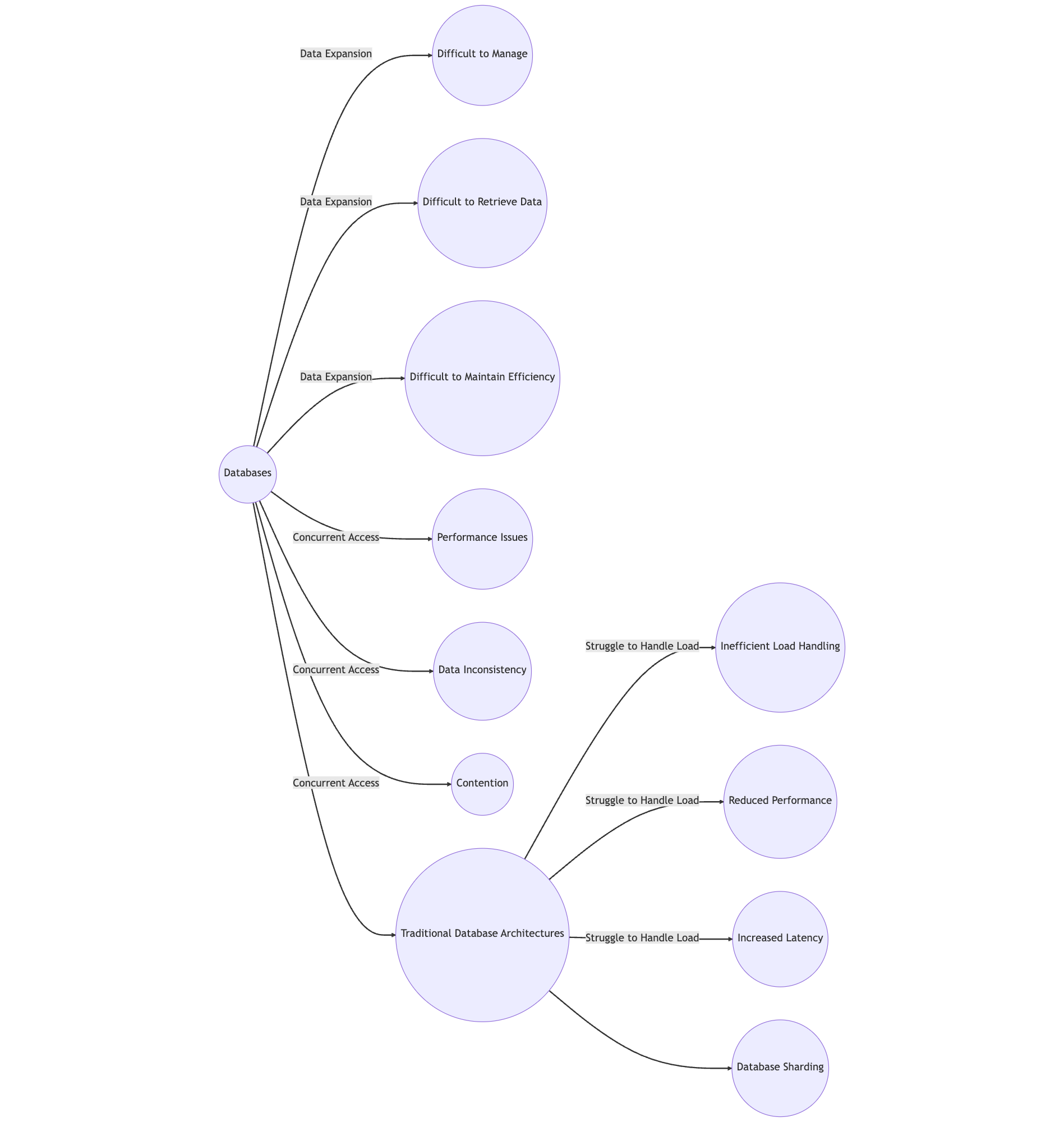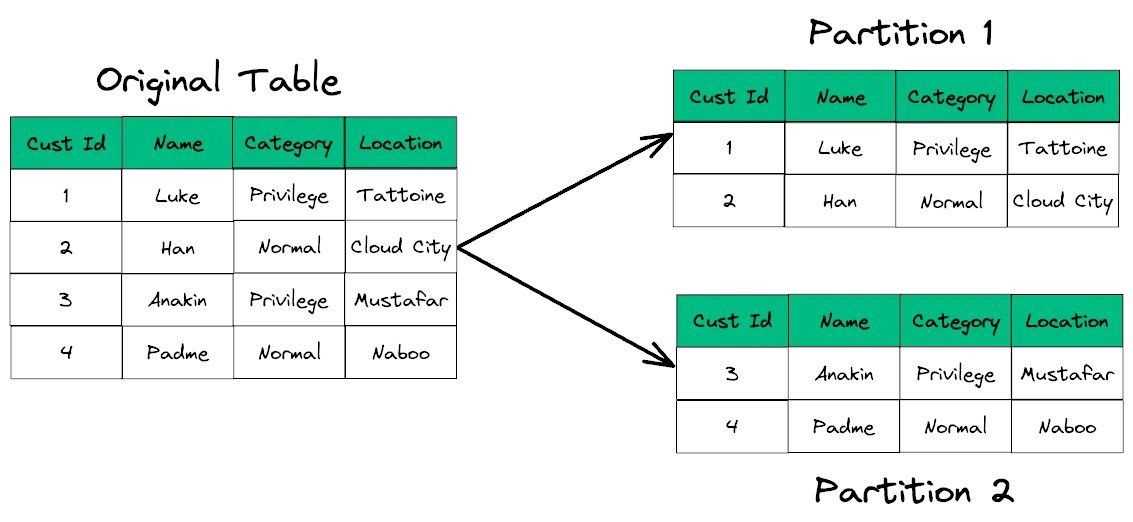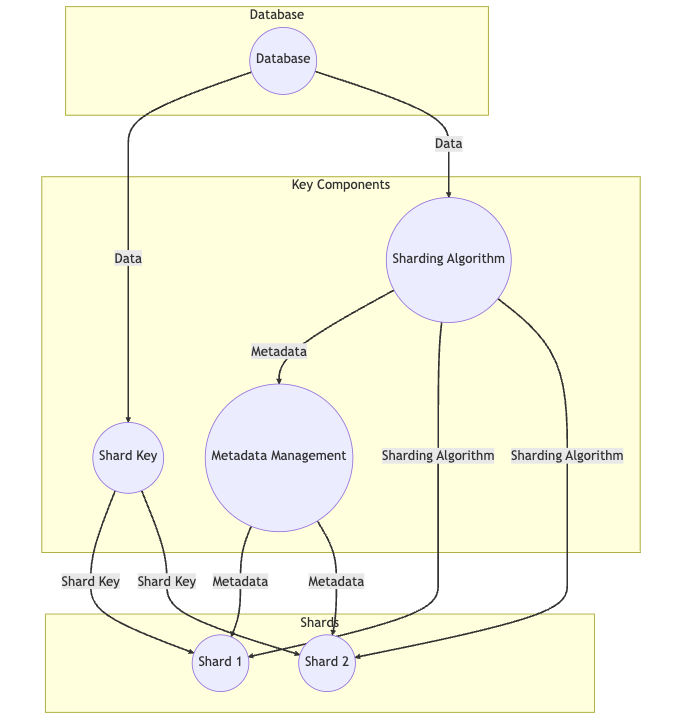What is Database Sharding?
Database sharding is a technique that splits a database into smaller shards to improve performance, scalability, and availability.

Databases can grow exponentially over time as your business expands, making it difficult to manage, retrieve data, and maintain efficiency. This problem can be further compounded when multiple users try to access the data concurrently.

As the volume of data grows, traditional database architectures may struggle to handle the load efficiently. This is where database sharding comes into play.
📁 What is Database Sharding?
Database sharding is a technique that splits a database into smaller, easily manageable shards while still maintaining uniformity across them. Shards are then stored on different servers, which can improve performance and scalability.

To achieve this, database sharding distributes data across several servers, avoiding the bottleneck of a single server, which can be overwhelmed when large amounts of data are involved.
♦ There are two main types of Database Sharding

1. Horizontal Sharding
Horizontal sharding is the most common type of database sharding. In horizontal sharding, the data is divided into rows based on a common attribute, such as the user ID or the product ID. Each shard contains all of the rows for a particular attribute.
For example, a database of customer orders could be sharded by customer ID. Each shard would contain all of the orders for a particular customer.
✅ Horizontal sharding can improve performance by distributing the load across multiple servers. This is because each server only needs to process the rows that are stored on it.
2. Vertical Sharding
Vertical sharding divides the data into columns based on a common attribute, such as the product name or the product price. Each shard contains all of the columns for a particular attribute.
For example, a database of product inventory could be sharded by product name. Each shard would contain all of the information about a particular product, such as the product name, the product price, and the product quantity.
✅ Vertical sharding can improve performance by improving the query performance. This is because each server only needs to process the columns that are needed for a particular query.
How Database Sharding Works?
At its core, database sharding involves partitioning the data based on a shard key. The shard key determines which shard a particular data entry belongs to. It could be based on various factors such as user ID, geographic location, or a specific attribute.

When a query or transaction is executed, the system uses the shard key to identify the shard that contains the relevant data. This way, each query only needs to access a subset of the data, reducing the overall query response time and improving efficiency.
→ Key Components of Database Sharding
To implement successful sharding, certain key components and concepts need to be considered:
- Shard Keys: The shard key is the attribute or combination of attributes used to determine the shard for a given data entry. Careful selection of shard keys is crucial to ensure balanced data distribution and efficient query routing.
- Sharding Algorithms: Sharding algorithms determine how the system maps the shard key to a specific shard. Various algorithms, such as range-based, hash-based, or modulo-based, can be used based on the characteristics of the data and the desired distribution.
- Metadata Management: Metadata management involves keeping track of shard locations, shard health, and other relevant information. It helps in maintaining the consistency and availability of the sharded database.
✅ Benefits of Sharding:
Database sharding can bring several benefits to businesses, including:
- Increased scalability and performance: As the amount of data grows, sharding makes it easier to grow horizontally by adding more servers.
- Improved fault tolerance: Since each server is responsible for managing only a part of the data, the system can remain operational if a server fails.
- Enhanced data security: Sharding allows you to implement different security measures on each shard, minimizing the risks involved in handling massive volumes of data.
❎ Drawbacks of Sharding:
Sharding can have a few drawbacks, including:
- Complexity: The process of setting up sharding can be complex as it mandates distribution of the data across servers.
- Cost: Setting up and managing servers can incur capital and operational expenditure, impacting overall budgeting.
😎 When to Use Database Sharding?
Database sharding should be used when a database is experiencing high levels of traffic or when it is storing large amounts of data. Database sharding can also be used to improve the performance of a database or to make it more resistant to failures.
⚔️ Challenges and Considerations
While database sharding offers numerous benefits, there are challenges and considerations that need to be addressed:
- Data Consistency and Integrity: Ensuring data consistency across multiple shards can be complex, especially in scenarios involving distributed transactions. Careful design and implementation of data synchronization mechanisms are necessary to maintain data integrity.
- Query Complexity and Optimization: Querying data across multiple shards requires specialized techniques and tools. Developers need to consider the query patterns, data distribution, and indexing strategies to optimize performance and minimize the impact of cross-shard queries.
- Sharding Overhead and Maintenance: Sharding introduces additional complexity in terms of infrastructure management, data partitioning, and shard rebalancing. Regular monitoring and maintenance activities are required to ensure the system operates smoothly.
☠️ Sharding Strategies
There are different sharding strategies that can be employed based on the specific requirements of the application. The common approaches are :
- Horizontal Sharding: In horizontal sharding, the data is divided based on rows. Each shard contains a portion of the overall data rows. This approach is useful when the application needs to handle a massive number of concurrent read and write operations.
- Vertical Sharding: Vertical sharding involves splitting the data based on columns. Each shard contains a subset of columns for all the rows. This strategy is useful when different attributes of data require different levels of scalability.
- Hybrid Sharding: As the name suggests, hybrid sharding is a combination of horizontal and vertical sharding. It offers the flexibility to partition data both by rows and columns, allowing for more fine-grained control over scalability and performance.
- Logical & Physical Sharding: Sharding can be achieved logically or physically. Logical sharding happens at the application layer and is used for partitioning individual data types or tables. On the other hand, physical sharding involves an entire database partitioned and split by distribution across different servers.
- Key or Hash-Based Sharding: Key or hash-based sharding involves the distribution of data based on the value of a specific column that serves as the shard key. This ensures that the values with the same shard key will always remain in the same shard.
- Range-Based Sharding: In range-based sharding, data is divided based on the range in which values fall under a specific column.
- Directory-Based Sharding: In directory-based sharding, a directory service is used to map the data partitioning to the corresponding servers.
👾 Real-World Examples
Database sharding has been successfully implemented in various industries and applications:
- E-commerce: Online marketplaces that handle millions of transactions daily use sharding to ensure high performance and availability.
- Social Networks: Platforms with a massive user base leverage sharding to handle user data efficiently and deliver a seamless experience.
- Gaming: Multiplayer games with large player bases utilize sharding to distribute game data and facilitate real-time interactions.
Summarization
Database sharding is a technique that involves the distribution of data across several servers, making data management and access more efficient, fault-tolerant, and secure.
It requires split shards that are uniform by making the data partitioning into ranges, keys or hash-based calls, or even directory-based decisions. The advantages of sharding include scalability and enhanced performance, fault tolerance, and better security.
However, increased complexity and cost can be the main obstacles to consider before committing to sharding.
FAQs
Is database sharding applicable to all types of databases?
Yes, database sharding can be implemented in various types of databases, including relational databases, NoSQL databases, and distributed database systems.
Can sharding be done dynamically without disrupting the system?
Yes, dynamic sharding techniques exist that allow for adding or removing shards without causing significant disruptions. However, careful planning and implementation are necessary to ensure seamless transitions.
What are the alternatives to sharding for improving database scalability?
Other alternatives for improving database scalability include database replication, caching, and the use of distributed file systems. Each approach has its advantages and considerations.
Does sharding impact data security and privacy?
Sharding itself doesn't directly impact data security and privacy. However, organizations should implement appropriate security measures and access controls to protect data across all shards.
How does database sharding affect backup and disaster recovery processes?
Backup and disaster recovery processes need to be tailored to the sharded environment. Organizations should implement backup strategies that consider the distributed nature of the data and ensure the availability of backups for each shard.
